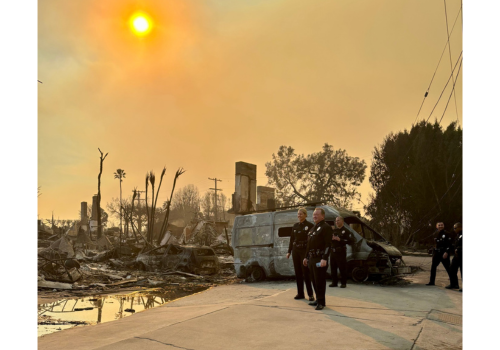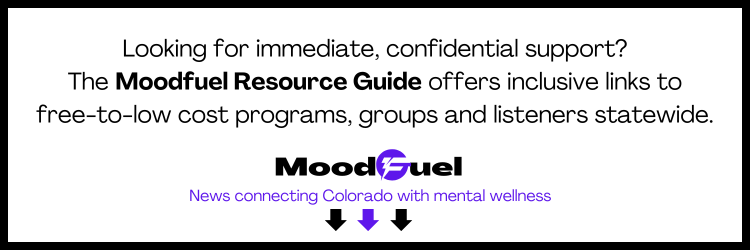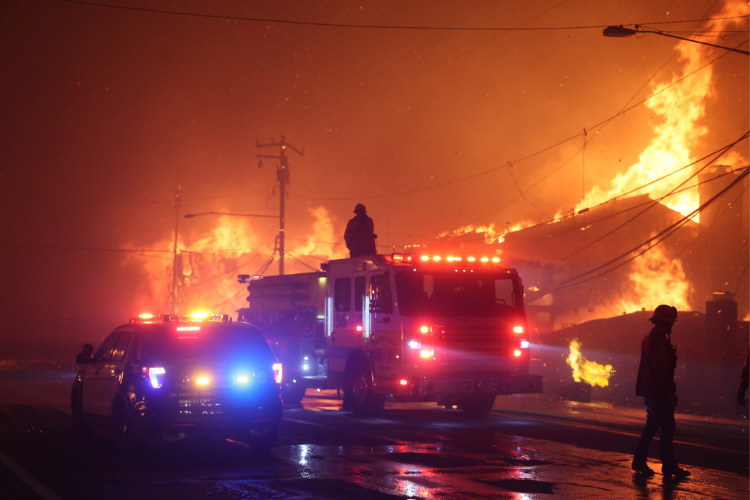By Amanda Mascarelli, The Conversation and Ian H. Stanley, Univ. of Colorado Anschutz Medical Campus
The thousands of firefighters and other first responders on the front lines of the Los Angeles wildfires, including many Coloradans, are at increased risk for anxiety and PTSD
Amanda Mascarelli, The Conversation's senior health and medicine editor, spoke with Ian H. Stanley, a Colorado clinical psychologist and emergency medicine researcher. They discussed the early signs of PTSD and acute stress, plus ways family and friends can help.
How does PTSD differ in the short term versus the long term?
Post-traumatic stress disorder (PTSD) is a mental health condition that develops following exposure to a life-threatening event, such as a wildfire, car accident, physical assault or combat. It involves the development of characteristic symptoms that are brought on or that worsen following the trauma and that persist for at least a month.
The symptoms range from nightmares to reliving the event to feelings of guilt and hopelessness or of hypervigilance, meaning constantly being on guard for future threats. Symptoms may also involve sleep disturbances as well as avoiding certain triggers or reminders of the event. Another important point is that those symptoms must involve considerable distress or impairment, such as interrupting relationships, work, school or self-care.
What are potential early signs of PTSD?
In the case of first responders working the L.A. fires, though it’s incredibly stressful, they are trained to put their heads down and push through really difficult events. It doesn’t mean they aren't affected by it, but symptoms may not be present initially.
As time gos on, they may develop symptoms, such as feelings of sadness, irritability or persistent sleep disturbances. Over the longer term, some people may develop PTSD. So, it’s important for the first responders themselves and family and friends to remain vigilant about their mental health.
While there's no concrete formula because we all experience events differently, the biggest things to look out for are notable changes. For example, is someone eating more or less? Are they sleeping more or less? Are they getting cranky more than they used to? Are they drinking more alcohol? Are they hanging out with friends less? Are they engaging less in activities they've enjoyed previously? If you notice these types of changes, reach out and offer support.
One of the reasons PTSD symptoms are so worrisome is because they can reliably predict suicidal thoughts and behaviors. So, it’s really important to catch the signs early to prevent the progression.
What about other signs of stress, different from PTSD?
It’s important to emphasize that it’s normal for people to be sad, angry and anxious following a disaster or other traumatic event.
That said, there's another condition called acute stress disorder, similar to PTSD. However, whereas PTSD symptoms must exist for a month, acute stress disorder can be diagnosed when symptoms continue for at least three days and up to one month after a traumatic exposure. In these cases, a person might experience nightmares, persistent negative mood, irritability, sleep disturbances or related conditions.

The acute stress diagnosis opens up pathways for prompt services and the opportunity for insurance-reimbursable treatments. Many people with acute stress disorder don't progress to PTSD, but about half do.
Do early PTSD symptoms translate to long-term ones?
It's an important question. When someone’s world as they’ve known it is torn apart and turned upside down – as with the fires in Southern California – it’s normal to expect changes in the way people think, feel or act.
Sadness is normal. Anxiety is normal. Most people who experience these changes feel better in a few weeks and don't develop further challenges.
Many people get better with time. Time heals and so does social support.
If symptoms persist, reaching out to a mental health professional and/or support group is very helpful.
First responders have a higher prevalence of PTSD than the general population. Up to 20 percent of emergency personnel responding in natural disasters may go on to develop PTSD.
Markedly, if the responder is working in their own community and is personally affected, those circumtances increase their risk.
What treatment options exist for PTSD?
There are very good, successful treatments to help people recover. Options include medication, talk therapy and Eye Movement Desensitization and Reprocessing (EMDR). Health apps, like “PTSD Coach” created by the U.S. Dept. of Veterans Affairs (VA), are freely accessible, too.
The National Center for PTSD, also part of the VA, offers helpful resources for family members and friends.

This article is republished from The Conversation under a Creative Commons license.


